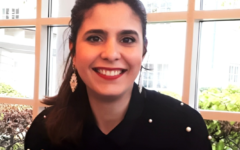The Teaching Historical Interpretation in Moroccan Upper Secondary Education: Between Classroom Practices and Contemporary Epistemological and Didactic Advancements
31 March 2025 2025-04-03 3:36The Teaching Historical Interpretation in Moroccan Upper Secondary Education: Between Classroom Practices and Contemporary Epistemological and Didactic Advancements

The Teaching Historical Interpretation in Moroccan Upper Secondary Education: Between Classroom Practices and Contemporary Epistemological and Didactic Advancements
This study explores how historical interpretation is taught in Moroccan secondary school history classrooms. Historical interpretation is key to understanding the perspectives of people from the past, but it requires thoughtful teaching methods to make it meaningful for students. The research looks at whether teachers’ views and classroom practices align with modern approaches to teaching history. To investigate this, the study used surveys to understand teachers’ perceptions and classroom observations to see how historical interpretation is actually being taught. The findings reveal a clear gap between theory and practice. Many teachers lack proper training in this area, often confusing explanation with interpretation, which affects the way history is presented to students. While some teachers recognize the importance of historical thinking, inconsistencies in their methods make it difficult for students to develop strong analytical skills. Too often, historical interpretation is approached superficially, without emphasizing its role in building knowledge. As a result, students miss out on opportunities to think critically about history. This study highlights the need for better training and support for teachers so they can help students engage more deeply with historical interpretation and develop the critical thinking skills necessary to understand the past.
Lamia Lakhouatri
Related Posts
Search
Categories
Popular Tags






